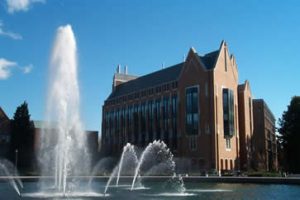LTE-LAA WiFi Coexistence:
With both small-cell LTE and 802.11 networks available as alternatives for deployment in unlicensed bands (notably 5 GHz), the investigation into their coexistence is a topic of active interest, primarily driven by industry groups. Notably, 3GPP has standardized LTE Licensed Assisted Access (LAA) that seeks to make LTE more co-existence friendly with Wi-Fi by incorporating similar sensing and back-off features. Nonetheless, the results presented by industry groups offer little consensus on important issues like respective network parameter settings that promote “fair access” as required by 3GPP. Answers to such key system deployment aspects, in turn, require credible analytical models, on which there has been little progress to date. Accordingly, in this project, we develop a new framework for estimating the throughput of WiFi and LTE-LAA in coexistence scenarios via suitable modifications to the celebrated Bianchi model. Also, the fairness of this coexistence network based on 3GPP definition of fairness and proportional fairness is investigated. The proposed model is corroborated via a National Instrument (NI) Labview based experimental testbed that validates the results for LTE-LAA access priority class 1 and 3. In addition, ns-3 (network simulator) module for WiFi and LTE-LAA coexistence can be found here.
LTE-LAA WiFi Fairness:
In the coexistence of dissimilar networks where the Wi-Fi is based on carrier sense multiple access collision avoidance (CSMA/CA) and LTE-LAA are based on time division multiple access (TDMA) and listen before talk (LBT), the fairness is one the most controversial challenges which are investigated in this paper. The intellectual merit of this paper is significant for the following reason. Currently, there are multiple partial solutions that have been proposed by industry players reflecting existing vested or partisan interests, in promoting one side (LTE) or the other (Wi-Fi). As a result, the fairness challenge posed here remains unsolved, because the industry proponents appear unable to frame the questions in a fundamentally unbiased and comprehensive manner.
There are different notions of fairness in wireless networks in which the network achieves fairness in different aspects. One of the fairness notions is the 3GPP fairness as: “LAA design should target fair coexistence with existing Wi-Fi networks to not impact Wi-Fi services more than an additional Wi-Fi network on the same carrier, with respect to throughput and latency”. In this definition, the Wi-Fi network achieves fairness. However, the fairness is not achieved in the total coexistence network which could be achieved by considering the proportional fairness.
In this project, we first investigate some of the fairness issues in coexistence system and propose some approaches to achieve the fairness through the co-design of Wi-Fi and LTE-LAA and one-sided design of LTE-LAA as:
(1) Defining the concept of fair sharing between two dissimilar systems: LTE-LAA and Wi-Fi CSMA/CA. In this project, we are considering the access and throughput fairness criteria.
(2) Proposing a coexistence schemes that unlicensed LTE can deploy to ensure fair sharing with Wi-Fi. This is the approach proposed by the 3GPP standard which is the one-sided design of the unlicensed LTE.
(3) Proposing a coexistence schemes that both unlicensed LTE and Wi-Fi can deploy to ensure fair sharing to achieve the maximum throughput, i.e., co-design of unlicensed LTE and Wi-Fi.
LTE-U WiFi Coexistence:
With the proposal of introducing LTE systems in unlicensed spectrum; extensive research, discussion and system testing are in progress to finalize LTE standard in unlicensed spectrum. Significant impact to WiFi network is foreseen and thus to address the impact on WiFi network, we have made an effort to develop WiFi-LTE coexistence module for the well-known network simulator ns-3. To our knowledge, ns-3 is presently the only freely available network simulator for coexistence studies. Together with CTTC, we have made available the indoor scenarios designed by 3GPP RAN1 for simulation in ns-3 mentioned in 3GPP Release 13 LTE. Please refer to this presentation for our effort.
LTE-U Forum proposes, for LTE network to operate in unlicensed spectrum eNB shall be able to create ON/OFF time pattern on SCell using CSAT (Carrier-Sensing Adaptive Transmission) procedure. In this direction, we provide duty cycling (DC) simulation capabilities to ns-3 for LTE-U system as specified in LTE-U Forum. Then we are develop an analytical model for coexistence of WiFi and LTE-U (DC), with a focus to understand the critical concept of fairness in such heterogeneous network.
The lte-wifi-coexistence module in ns-3 was developed under a WiFi Alliance funded project involving collaboration CTTC and UW and updated by Muhammad Iqbal in the 2018 Google Summer of Code:
ns-3 Wi-Fi and LTE-DC Coexistence Scenario Example.
The initial ns-3 version of Wi-Fi with LTE-DC coexistence uses the waveform based LTE-DC model for modeling the LTE-DC behavior. The example scenario can be found here:
Wi-Fi and Waveform based LTE-DC Coexistence Scenario ns-3 Example.
For subsequent LTE-DC performance evaluation, we used the LTE-based duty cycling capability. The example scenario can be found here:
Wi-Fi and LTE-DC module Coexistence Scenario Example.
For LTE-U duty cycle manuscripts as of February 2019, the ns-3 coexistence code can be found on the branch “lte-dc-analysis” of the Bitbucket repository:
ns-3 Wi-Fi and LTE-U Coexistence Code.

